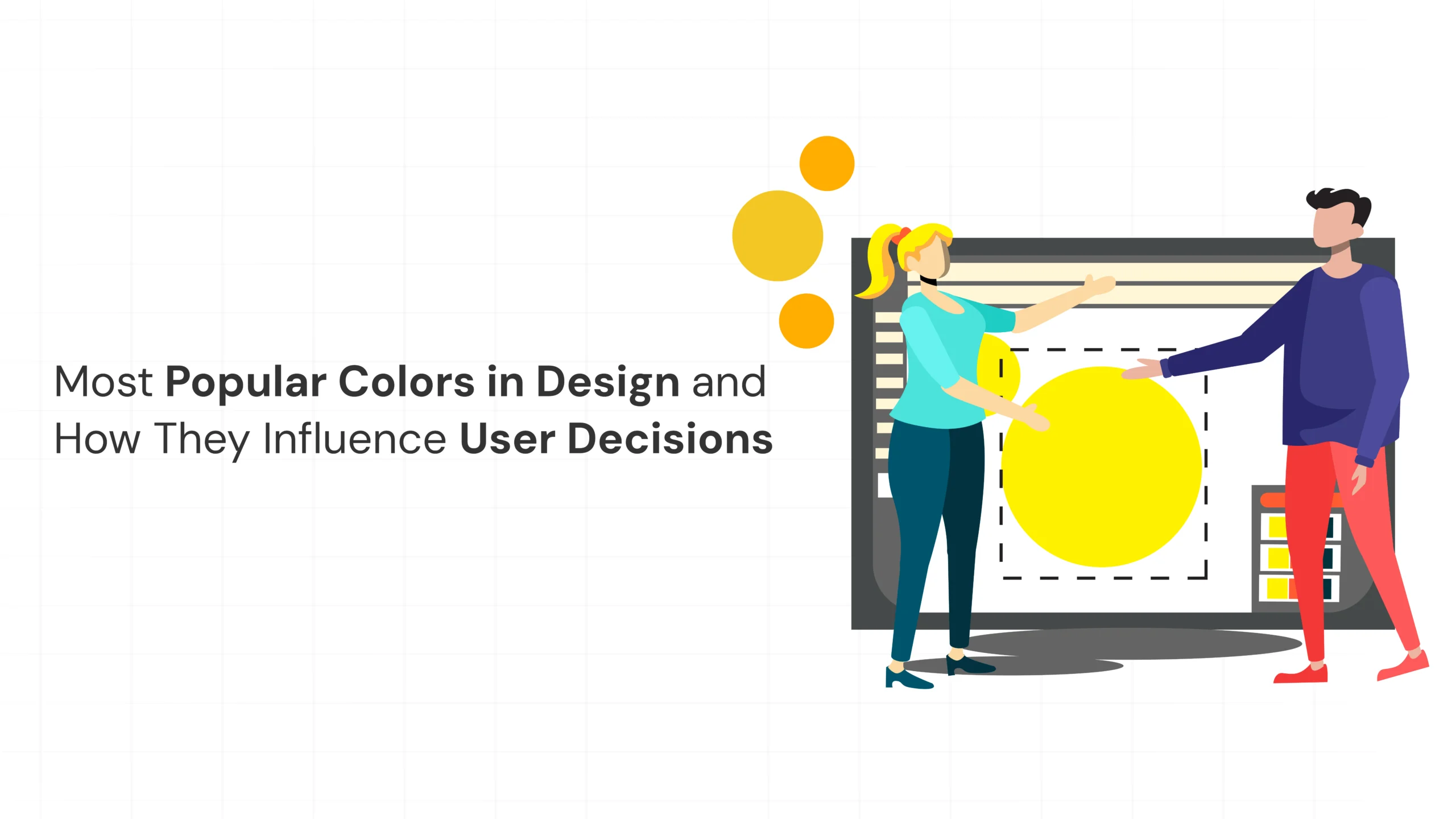
Why Colors Matter in Design
The color is not just decorative – this is psychological architecture. People treat visible data quickly than text, and popular colors in design can trigger immediate subconscious reactions. The choice of palette can define whether a user feels safe, enthusiasm, calm or even hesitant to be wrapped with a brand.
- August 29, 2025
- Ayesha J
- 10:00 am
The color is not just decorative – this is psychological architecture. People treat visible data quickly than text, and popular colors in design can trigger immediate subconscious reactions. The choice of palette can define whether a user feels safe, enthusiasm, calm or even hesitant to be wrapped with a brand.
Research suggests that about 90% of SNAP decisions on products are based on color alone. This shows how powerful it can not only be in shaping the user’s opinion, but also in designing the decision behavior. In the design, the color is more than beauty – it is a strategic driver for engagement.
The Most Popular Colors in Design Today
Blue – trust and reliability
Blue is still the most popular color in design for corporate brands and technological platforms. It communicates stability, faith, and professionalism. Companies such as LinkedIn, PayPal, and IBM utilize Blue as it assures users and promotes reliability.
Red – Speed and Energy
Red exposes passion, strength, and urgency. Designers use it strategically in CTA (Call-to-action (CTA), cell tags, and marketing of banners when forcing users to take action. However, very red can overwhelm-basically is important.
Green – development and stability
From environmentally friendly start-ups to Fintech apps, Green Balance is a symbol of balance, wealth, and health. Stability is the highest priority for users and expresses authenticity and care for both green people and planets.
Yellow – Optimism and Meditation
The yellow is alive and stimulating, from which it an ideal accent to highlight important properties. The summer draws attention from brands such as Snapchat and National Geographic Harness. However, when used excessively, it can cause visual fatigue.
Black and white – minority and elegant
Monochromatic palettes are popular for modern UI design. Black offers excess authority and sophistication, while White offers clarity and location. United, they provide timely elegance and access.
Color Psychology in UX
Colors aren’t just aesthetic choices; they shape user experience (UX). The field of color psychology in UX emphasizes how hues influence usability and emotional connection.
- Blue and other soothing hues help people remain longer by lowering cognitive burden.
- For those who are visually impaired, high contrast designs enhance reading and accessibility.
- In gamified or entertainment platforms, vibrant color schemes generate excitement.
By taking into account people who are color blind, utilizing contrast ratios, and avoiding an excessive dependence on color-coded signals, designers can guarantee inclusion.
The Influence of Color in Design Decisions
The influence of color in design decisions goes beyond aesthetics—it affects measurable business outcomes.
Conversions: HubSpot discovered that a 21% boost in conversions occurred when the color of the CTA button was changed from green to red. User behavior is directly influenced by color psychology.
Cultural Impact: White is a color associated with sorrow in certain Asian cultures and purity in Western markets. When color symbolism is misused, audiences may become hostile.
Case Studies:
- Spotify’s neon green design easily identifies the app.
- The red color of Coca-Cola creates a sense of urgency and enthusiasm about drinking.
- Apple’s understated black-and-white design emphasizes high-end style.
How Businesses Can Choose the Right Palette
For businesses, the question isn’t what’s trendy but what aligns with brand essence.
- Brand Identity Alignment – A financial institution using hot pink may confuse users; the palette must echo the brand’s values.
- Audience Testing: By A/B testing several landing page color schemes, it is possible to determine which hues increase user engagement.
- Functionality Over Fancy: Readability and accessibility should continue to be top concerns, even while 2025 design trends are dominated by gradients and vivid hues.
Businesses can attain both visual appeal and quantifiable return on investment by combining user-centric testing with popular colors in design.
Final Thoughts
Colors tell stories without using words. They determine how consumers view a product, how soon they believe in it, and whether they continue to use it. Businesses must carefully modify palettes when popular colors in design change, not only for aesthetic reasons but also for user psychology and quantifiable effects.
Want a design palette that not only looks stunning but also converts? At Kavinu Designs, we specialize in crafting user-centered color strategies that elevate brand identity and boost engagement. Let’s design with purpose!
Latest Blogs
-
Why Calm Is the New Competitive Advantage in Digital Design (2026)31 Dec 2025
-
Why the Best Digital Experiences in 2025 Feel Effortless24 Dec 2025
-
The Digital Experience Playbook for 2025: UX, SEO, AI & Branding Explained Simply18 Dec 2025
-
The Future of Digital Branding: Why Emotion-Led Design Will Rule 202505 Dec 2025
-
How Gen Z Is Redefining Brand Experience Expectations in 202512 Nov 2025
Work With Us to Create Impactful Digital Experiences
FAQ
Color psychology in UX means how colors affect emotions, interactions, and purposes. This helps designers create intuitive interfaces that increase trust, dedication, or urgency.
Red and orange are the most effective for instant-operated CTAs, while the blue confidence increases and works well for economic or environmentally friendly platforms. The best-performing color depends on the audience and reference.
The cultural perception of color varies – red is a symbol of luck in China but threatens in Western contexts. Global brands should adapt to the palette to echo with different cultural expectations.

